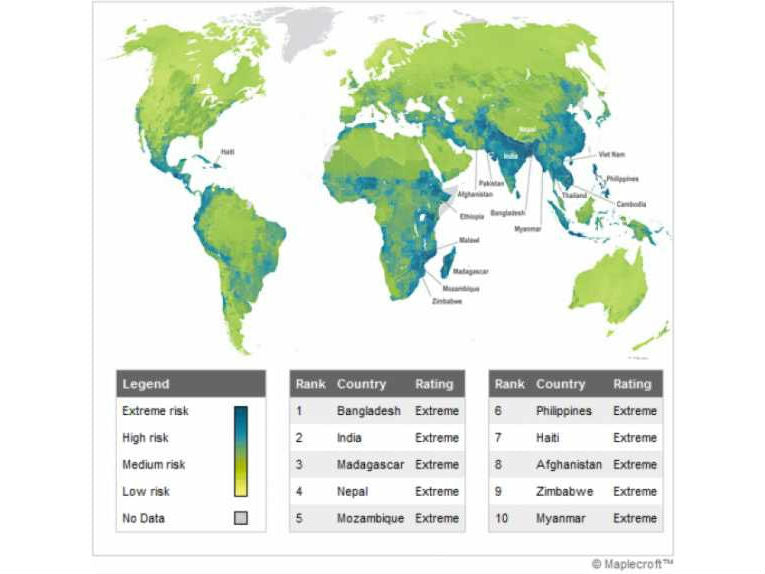The latest Climate Change Vulnerability Index (CCVI), released by the UK based global risks advisory firm Maplecroft, has revealed that India and Bangladesh top the list of Asian countries that face 'extreme risk' from climate change. These two countries, followed closely at fourth position by Nepal, are the most vulnerable to the impacts of climatechangeover the next 30 years.
The index is aimed at enabling organizations to identify areas of risk within their operations, supply chains and investments. It is based on evaluations of 42 social, economic and environmental parameters to review national vulnerabilities across three main areas.
These include: exposure to climate-related natural disasters and sea-level rise; human sensitivity, in terms of population patterns, development, natural resources, agricultural dependency and conflicts; thirdly, the index assesses future vulnerability by considering the adaptive capacity of a country's government and infrastructure to combat climate change.
The year 2010 has seen a series of devastating natural disasters like the floods in Pakistan that affected over 20 million people and saw more than 1,700 people dead. These, say, Dr Anna Moss Environmental Analyst at Maplecroft, are direct results of changes in weather patterns.
"Very minor changes to temperature can have major impacts on the human environment, including changes to water availability and crop productivity, the loss of land due to sea level rise and the spread of disease."
Population woes
India is already facing the brunt of weather changes says, analysts at Maplecroft. Its vulnerability was seen when heavy rains stalled the construction of thestadium and athletes' village.The country's growing population and strain on natural resources compounded by a high degree of poverty and predominantly agrarian economy increases its risk to climate-related events.
The same factors also make Bangladesh vulnerable. This is compounded by governmental machinery that has been found to have the lowest capacity among all countries globally to adapt to predicted changes in the climate. As a country it suffers the twin problems of drought and flood. The October 2010 flooding caused by storms that displaced 500,000 peopleis a case in point. While the economy shows growth and is predicted to by the IMF (International Monetary Fund) to grow 5.4% over 2010 and up to6.2% over the next five years, this can be severely hampered by climatic conditions.
11 countries considered are 'low risk' in the index, with Ireland at 167 followed by Iceland , Finland and Norway.










